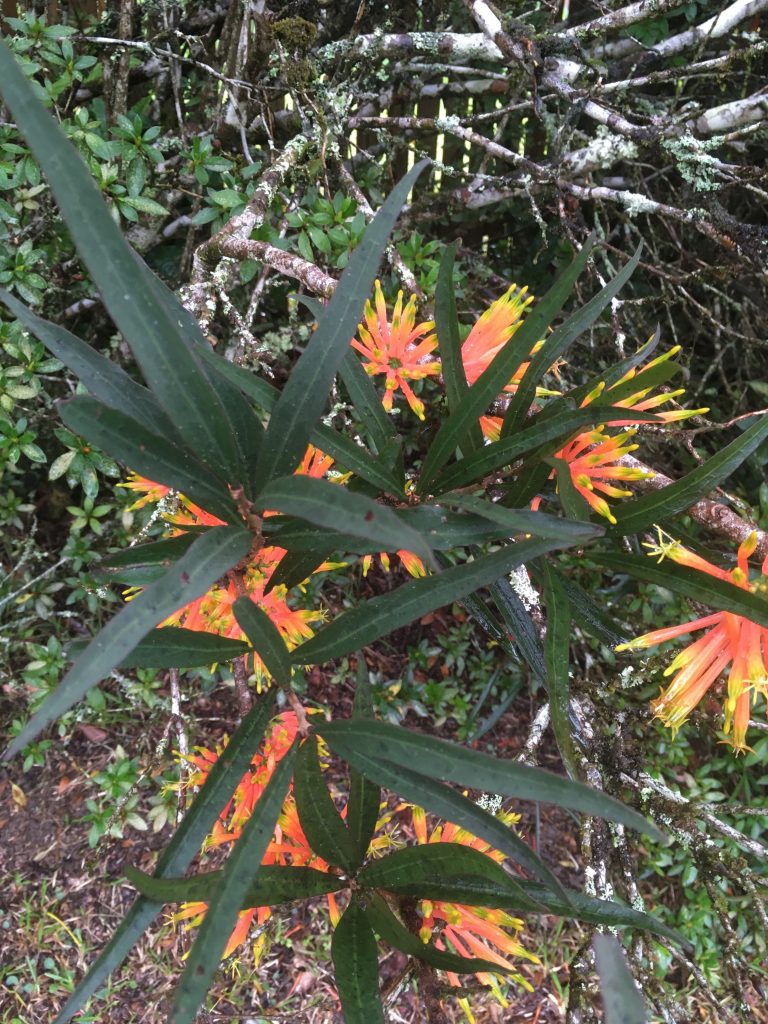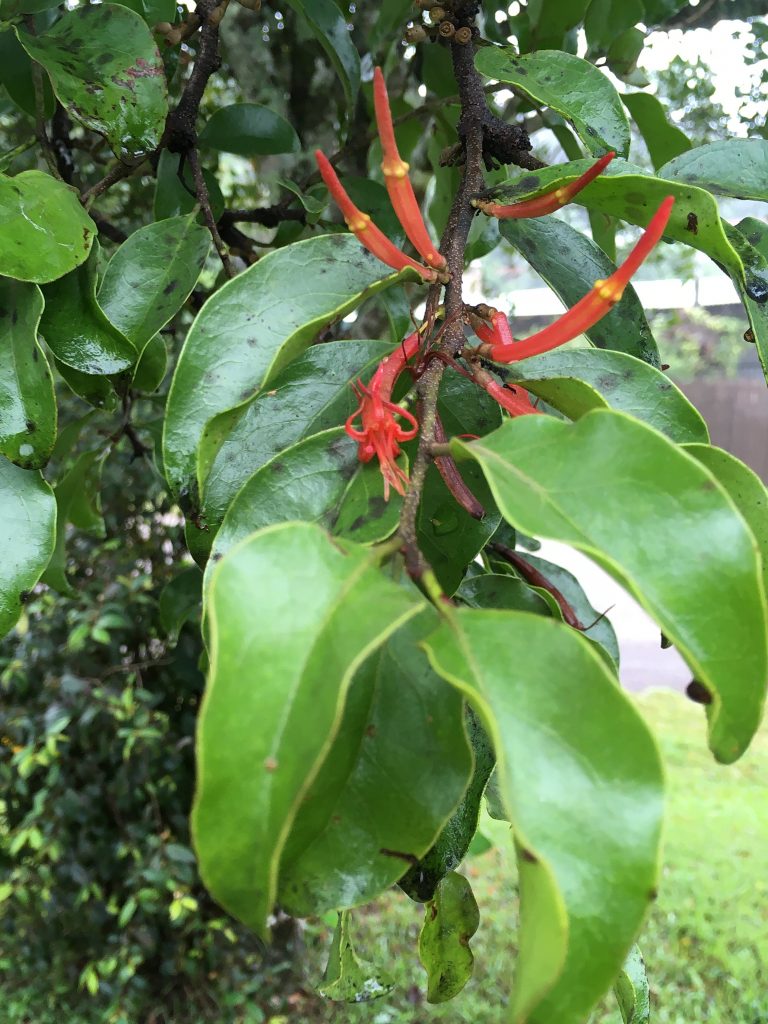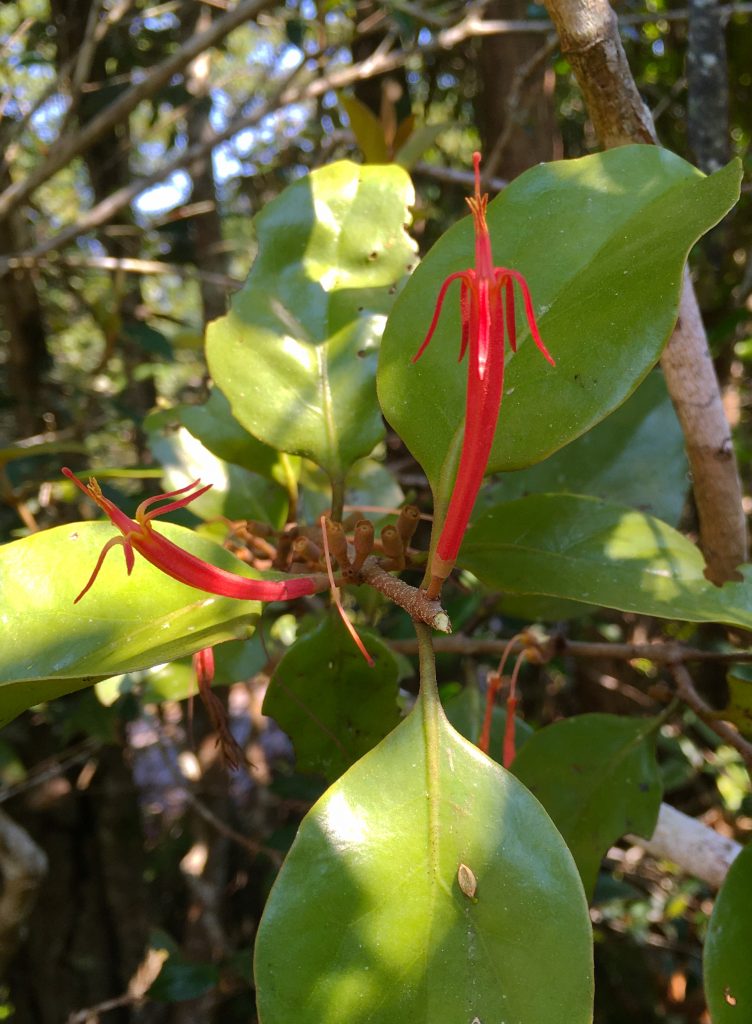Mistletoes are a group of parasitic plants belonging to the Order Santalales. Australia has a high diversity of mistletoes (over 85 species) with the majority in the family Loranthaceae.

When we think of parasites we often envisage small or microscopic animals that can make you sick, or even kill you, but this way of living (where one organism harms another by using it for nourishment or other vital need) is widespread in all branches of life. In vascular plants parasitism has evolved at least 12 times, with the mistletoe form having evolved 5 separate times within the Order Santalales.
Mistletoes are considered to be obligate hemiparasites because they cannot grow independently of their host plant (the relationship is obligatory) and because they still have their own leaves that can provide a significant proportion of their energy needs through photosynthesis (hemi=half). A spectacular mistletoe in Western Australia looks more like a tree (it parasitises roots rather than tree branches) and is said to be the largest parasite in the world.
Paluma hosts several mistletoe species and one, with beautifully shaped and gaudily coloured flowers is currently in bloom along the roadsides of the village. Its scientific name is a bit of a tongue-twister: Amylotheca subumbellata and it, unfortunately, doesn’t have a common name other than the generic “Mistletoe”. A. subumbellata has a restricted distribution (northeast Qld) with the majority of records from the Paluma region. Its clusters of small torpedo-shaped flowers with orange/red bases and yellow-green tips are very distinctive. Its leaves are also very distinctive, being narrow, strap-shaped and grey-green. One related and more widespread species that is also common around the village is the Bush Mistletoe (Amylotheca dictyophleba) has almost identical flowers, but its leaves are glossy green and ovate. It has very similar flowers (around the village they are more uniformly red), but they differ markedly from A. subumbellata in the shape and colour of their leaves, which are oval glossy green.
The name mistletoe is thought to be derived from two Anglo-Saxon words: “mist or mistel” meaning dung; and “tan” meaning twig. This “dung on a twig” name is quite apt. Mistletoe fruit is a favourite food for the mistletoe bird (a common Paluma resident) but the seed in the fruit is surrounded by a very sticky substance that resists digestion. When a mistletoe bird sits on a branch and tries to defecate, the sticky mass containing the seed just hangs off the birds rear end forcing the bird to wipe its bottom on the branch or twig. The seed is now exactly where it needs to be in order to germinate and infest a new host tree. David Attenborough came to Australia years ago to film this process and the result is a delightful sequence, well worth watching here.
The best places to see both of the mistletoe species discussed here are in the trees on the north side of the road cutting from 27-21 Mt Spec Road, and on either side of the road opposite the High Ropes Course.
Text and photos by Jamie Oliver








Very interesting. In my travels as a birder I have noticed a variety of birds getting some of their sustenance from the local mistletoe. Mainly honeyeaters but some others as well. Birds will seek shelter in it as some species of the mistletoe are dense and it provides good cover.
Thanks for your comments, Ken. I did not focus much on the birds associated with mistletoe, and you are right in saying the there is a host of birds that use it for varying purposes, including nesting sites. The flowers are rich in nectar, which attracts many honeyeaters, and they act as pollinators in the process. Quite a few birds eat the fruit on a regular basis. But apart from the mistletoe bird, only two other honeyeaters (Painted and Spiny-cheeked) act as seed dispersers. There was a very good article in Wingspan nearly 20 years ago that detailed the importance of mistletoes to birds (as well as insects).
Jamie